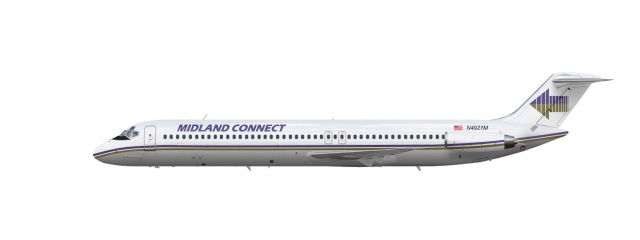E: Midland Connect Douglas DC-9-50
- Owner: srisri (View all images and albums)
- Uploaded: Nov 24 2019 12:12 AM
- Views: 584
- Album Midland Connect
srisri

By 1983, the new airline had rapidly expanded to add AUS, MKE, PIT, BNA, and CVG to their existing hub network of STL, MCI, MSY and MEM. The airline focused on connecting second-tier US directly to each other, in an era where larger airlines focused on establishing fewer, larger connecting hubs. Having returned to profitability by the second quarter of 1982, the airline acquired additional DC-9-30, DC-9-50, and Fokker F.28 Mk 3000 and 4000 aircraft . While the two parent airlines had initially operated solely from their original hubs, by 1983 they had effectively mixed their operations and fleet to allow for a larger range of flight capacities from all hubs.
To accentuate the airline's growth in connectivity and cohesion, the entire airline was rebranded and reorganized (in the typically confusing fashion of 1980's corporate America) as Midland Connect in November 1983:
- The Midland Connect Holding Corporation was formed, and headquartered in Kansas City.
- The River Air Lines Company (RALC) and the United Midland Airline Corporation (UMAC) would operate as subsdiaries.
- Aircraft owned by each subsidiary would stay under that airline.
- Public-facing branding of both airlines was changed to Midland Connect, but UMAC would operate mainline flights on their larger aircraft and RALC would operate regional feeder flights.

 Sign In
Sign In Create Account
Create Account









